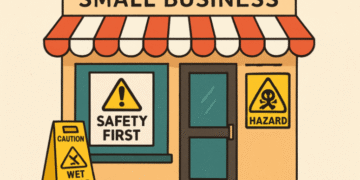In the very competitive construction industry, efficiency is vital. Money and time could be lost due to any errors, miscommunications, or delays in the planning or building process. The best ways to ensure a smooth process are to utilize high-quality drawings from the very beginning of the concept to the very conclusion of the building document. Precisely drawn materials play a crucial part in enhancing the project’s outcomes. If a company invests in the Designing and Drafting of precise documents, this precision forms the basis for success in planning, as well as communication and execution.
Drafting: The Language of Construction
Drawing is more than just drawing lines on paper or screen. It’s an art of visual language that translates architectural vision and precision of engineering into precise instructions to contractors, fabricators, and construction teams. An experienced drafter will ensure that every person involved in the project understands the concept’s purpose successfully. It reduces the chance of errors, modifications, or expensive revisions. A well-crafted draft can be felt throughout the entire duration of the project, from initial design until the actual building.
Enhancing Stakeholder Collaboration
The main benefit of top-quality drawing is the improved cooperation between different stakeholder groups. Architectural designers, engineers, and construction workers all depend on the exact set of drawings for the completion of their jobs. Accurate drawings make sure that all are in sync, which reduces the possibility of an error. This results in smoother transfers between teams as well as faster timeframes for projects. When, for instance, structural components are well-documented, engineers can assess the material and load requirements better, and contractors can design their construction plans with greater precision.
Risk Reduction Through Accuracy
A further benefit of high-quality drafts is the reduction of risk. On-site mistakes caused by poorly written documents can be expensive and include improper installation, material waste, and even security problems. When construction teams use accurate and detailed drawings, they are better equipped to foresee issues and take action before they become problems. Additionally, detailed drafts support regulatory compliance by ensuring that the designs conform to the local building codes and requirements. Documented plans make the process of obtaining permits and approvals from municipal authorities more efficient and reliable.
Assisting in Complex Projects through Detailed Design
Construction projects are becoming more complicated, and the requirement for accuracy in documenting becomes more crucial. This is particularly true of huge commercial or residential projects in which various design and system elements are required to work seamlessly. Utilizing 2D Drafting Services in the design stage allows designers to envision the layouts and dimensions as well as technical specifications at the highest level of precision. The drawings are used as the basis for the development of 3D designs, cost estimations, and construction plans. As long as they’re kept up to date, 2D drafts act as an instrument for controlling the project to ensure that the project is by the initial design intents.
Digital Tools and Modern Drafting Techniques
Construction organizations now operate differently because of digital drawing tools that give specialists unmatched skills. Real-time updates, automated revisions, and collaborative processes are made possible by software tools such as AutoCAD, Revit, and several BIM (Building Information Modeling) platforms. The most recent, accurate, and trustworthy information is accessible thanks to the speedy editing and group sharing of drafts. Additionally, electronic drafting minimizes human errors and increases accuracy in every area, from measurements to specifications for materials.
Resource Management and Cost Control
Alongside giving design clarity, good draftsmanship plays a crucial part in ensuring that resources are managed effectively. Construction teams can more precisely determine the quantity of materials needed, thus reducing the amount of waste they produce and maximizing purchasing. If the project’s scope is clear in drawings, both the time and the Millwork Cost Estimator of labor can be precisely planned and managed. This is why drafting is a powerful tool in managing and scheduling, not only a representation in visual form of the task.
Precision in Fabrication and Final Execution
As the project draws to a close, precise drafting becomes more crucial for both manufacturing and installation, particularly for custom-designed components like millwork, cabinets, and casework. Precision should not be compromised for these types of tasks. Fabricators rely on precise sketches to create parts that are perfectly suited to the spaces they have designed. That’s why tools such as collaboration with high-quality drafting tools ease the process of budgeting as well as production. Through aligning cost information with specific dimensions and specifications that are outlined in drawings, construction workers can ensure financial as well as technological accuracy, minimizing the need for costly adjustments at the last minute.
Conclusion
In the end, drafting that is of high quality is essential to every successful building and design. It helps improve communication, lowers risk, assures compliance, and helps to ensure clarity throughout all stages of the procedure. From initial sketches until the final checklist, it is essential to keep projects on schedule as well as on budget and in line with the expectations of clients. Investing in professional drafting is not just a decision on the technical side but an investment in strategic planning that is responsible for the success of all construction projects.










